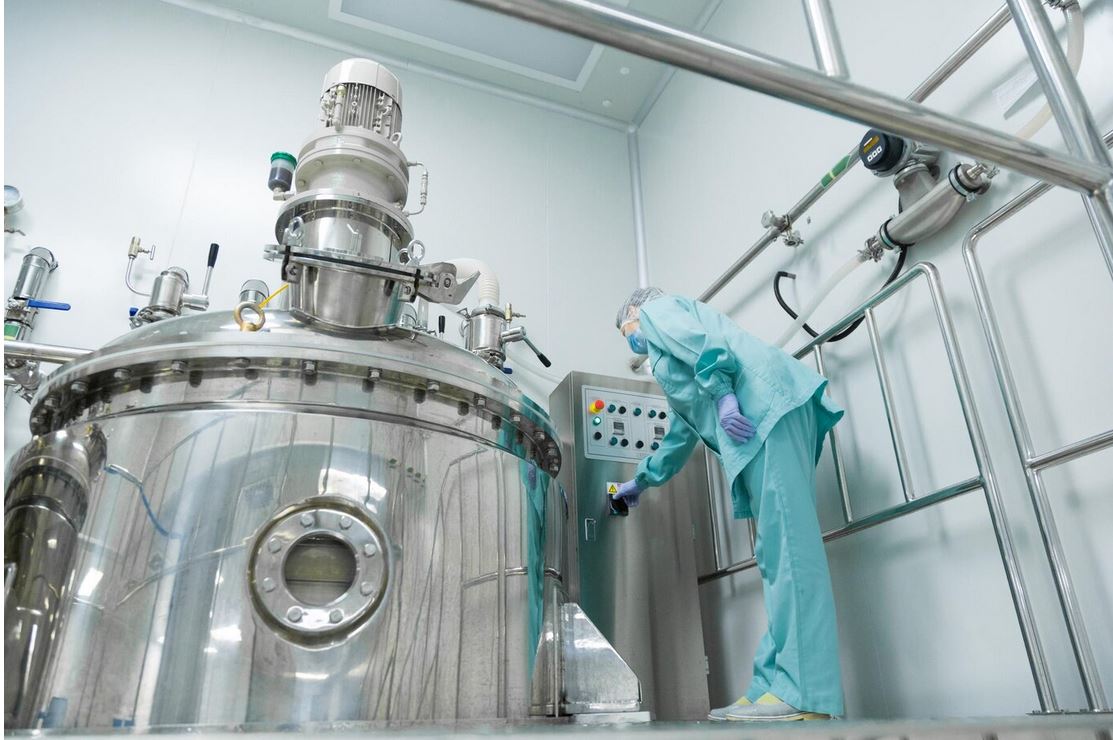
Oxygen generators are devices that produce oxygen by separating it from other gases in the air. They are used in various industries and applications where a reliable and continuous supply of oxygen is required. These generators play a crucial role in improving health and safety by providing a clean and pure source of oxygen.
In industries such as healthcare, manufacturing, and mining, oxygen generators are essential for maintaining a safe working environment. They are also used in military operations, where a portable and self-sustaining source of oxygen is necessary. Overall, oxygen generators have become an integral part of many industries, ensuring the availability of oxygen for various purposes.
History of Oxygen Generators: From Early Designs to Modern Day Innovations
The concept of oxygen generation dates back to the 18th century when scientists began experimenting with different methods to separate oxygen from air. One of the earliest designs was the chemical method, which involved heating certain compounds to release oxygen gas. However, this method was inefficient and not suitable for large-scale production.
Advancements in technology and innovation led to the development of more efficient oxygen generators in the 20th century. The introduction of pressure swing adsorption (PSA) technology revolutionized the industry by allowing for the production of high-purity oxygen on-site. This technology uses molecular sieves to selectively adsorb nitrogen and other gases, leaving behind pure oxygen.
Modern day oxygen generators have further improved in terms of efficiency and reliability. They incorporate advanced control systems and monitoring devices to ensure optimal performance. Additionally, advancements in materials science have led to the development of more durable and compact oxygen generators that can be easily transported and installed.
How Oxygen Generators Work: A Technical Overview
Oxygen generators work on the principle of separating oxygen from air using various methods such as pressure swing adsorption (PSA), vacuum pressure swing adsorption (VPSA), and membrane separation. These methods rely on the differences in the physical properties of oxygen and other gases to achieve separation.
In the PSA process, air is compressed and passed through a bed of adsorbent material, such as molecular sieves. The adsorbent material selectively adsorbs nitrogen and other gases, allowing pure oxygen to pass through. The adsorbent bed is then regenerated by reducing the pressure, releasing the trapped gases, and preparing it for the next cycle.
VPSA works on a similar principle but uses vacuum instead of pressure to achieve separation. The vacuum lowers the boiling point of the adsorbed gases, allowing them to be desorbed at lower temperatures. This method is particularly useful for applications where low-temperature operation is required.
Membrane separation involves passing air through a selectively permeable membrane that allows oxygen to pass through while blocking other gases. This method relies on the differences in the size and solubility of gases to achieve separation. Membrane oxygen generators are compact and require minimal maintenance, making them suitable for portable applications.
Benefits of Oxygen Generators: Improved Health and Safety
Oxygen generators offer several benefits in terms of improved health and safety in various industries. One of the primary benefits is improved air quality. By removing impurities and contaminants from the air, oxygen generators provide a clean and pure source of oxygen that is essential for maintaining a healthy working environment.
Another significant benefit is the reduced risk of fire and explosion. Oxygen generators can help eliminate or reduce the need for flammable gases such as acetylene or hydrogen, which are commonly used in industrial processes. By generating oxygen on-site, these generators eliminate the need for storing and handling flammable gases, thereby minimizing the risk of accidents.
Oxygen generators also enhance safety in various industries by providing a reliable and continuous supply of oxygen. In critical applications such as healthcare, where patients rely on oxygen for survival, having a backup source of oxygen is essential. Oxygen generators ensure that there is always a supply of oxygen available, even in the event of a power outage or other emergencies.
Applications of Oxygen Generators: Medical, Industrial, and Military
Oxygen generators have a wide range of applications in various industries. In the medical field, they are used in hospitals, clinics, and emergency services to provide oxygen therapy to patients with respiratory conditions. Oxygen generators ensure a constant supply of oxygen for patients who require it for breathing support or during surgical procedures.
In the industrial sector, oxygen generators are used in manufacturing processes such as metal cutting and welding. They provide a clean and pure source of oxygen that is essential for these processes. Oxygen generators are also used in the mining industry, where they are used to supply oxygen to underground workers and support ventilation systems.
In the military, oxygen generators play a crucial role in providing a portable and self-sustaining source of oxygen for soldiers in the field. These generators are designed to be lightweight and compact, allowing soldiers to carry them during missions. They provide a reliable source of oxygen for breathing and other applications, ensuring the safety and well-being of military personnel.
Types of Oxygen Generators: PSA, VPSA, and Membrane

There are several types of oxygen generators available in the market, each with its own advantages and disadvantages. The most common types include pressure swing adsorption (PSA), vacuum pressure swing adsorption (VPSA), and membrane separation.
PSA oxygen generators are widely used due to their high efficiency and reliability. They operate by adsorbing nitrogen and other gases using molecular sieves, allowing pure oxygen to pass through. PSA generators can produce high-purity oxygen with a concentration of up to 95%.
VPSA oxygen generators work on a similar principle but use vacuum instead of pressure to achieve separation. This method allows for lower-temperature operation and is particularly useful for applications where low-temperature oxygen is required.
Membrane oxygen generators use selectively permeable membranes to separate oxygen from other gases. These generators are compact and require minimal maintenance, making them suitable for portable applications. However, they have lower oxygen purity compared to PSA and VPSA generators.
Key Components of Oxygen Generators: Compressors, Filters, and Molecular Sieves
Oxygen generators consist of several key components that are essential for the oxygen generation process. These components include compressors, filters, and molecular sieves.
Compressors are used to compress air before it enters the oxygen generator. They increase the pressure of the air, allowing it to be efficiently processed by the generator. Compressors are available in different types and sizes depending on the specific requirements of the application.
Filters are used to remove impurities and contaminants from the air before it enters the oxygen generator. They help ensure that the generated oxygen is clean and pure, free from any particles or pollutants that could affect its quality. Filters need to be regularly replaced or cleaned to maintain optimal performance.
Molecular sieves are the heart of oxygen generators. They are responsible for selectively adsorbing nitrogen and other gases, allowing pure oxygen to pass through. Molecular sieves are made of zeolite, a crystalline material with a high affinity for nitrogen. The sieves need to be periodically regenerated by reducing the pressure, releasing the trapped gases, and preparing them for the next cycle.
Installation and Maintenance of Oxygen Generators: Best Practices
Proper installation and maintenance are crucial for ensuring optimal performance and longevity of oxygen generators. During installation, it is important to consider factors such as location, ventilation, and accessibility. Oxygen generators should be installed in a well-ventilated area away from sources of heat or flammable materials.
Regular maintenance is essential for keeping oxygen generators in good working condition. This includes cleaning or replacing filters, inspecting and lubricating moving parts, and checking for any leaks or malfunctions. It is also important to follow the manufacturer’s guidelines and recommendations for maintenance and servicing.
Challenges and Limitations of Oxygen Generators: Safety Concerns and Environmental Impact
While oxygen generators offer numerous benefits, they also come with certain challenges and limitations. One of the main safety concerns associated with oxygen generators is the risk of fire and explosion. Oxygen supports combustion, and any flammable materials in the vicinity can ignite when exposed to high concentrations of oxygen. Proper safety measures, such as storing oxygen generators away from flammable materials and ensuring proper ventilation, are essential to mitigate these risks.
Another challenge is the environmental impact of oxygen generators. The process of oxygen generation requires energy, which can contribute to carbon emissions and other environmental pollutants. However, advancements in technology have led to the development of more energy-efficient oxygen generators that minimize their environmental footprint.
Future of Oxygen Generators: Advancements and Potential Applications
The future of oxygen generators looks promising, with ongoing advancements in technology and innovation. Researchers are exploring new materials and methods to improve the efficiency and performance of oxygen generators. For example, there is ongoing research on the use of nanomaterials for enhanced adsorption and separation of gases.
The potential applications of oxygen generators are also expanding. With the increasing demand for clean energy sources, oxygen generators could play a role in hydrogen production through water electrolysis. They could also be used in space exploration missions, where a reliable source of oxygen is crucial for sustaining human life.
In conclusion, oxygen generators play a vital role in various industries by providing a reliable and continuous supply of oxygen. They improve health and safety by ensuring clean air quality, reducing the risk of fire and explosion, and enhancing safety in critical applications. With ongoing advancements in technology, the future of oxygen generators looks promising, with potential applications in various industries.


